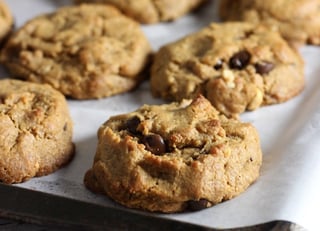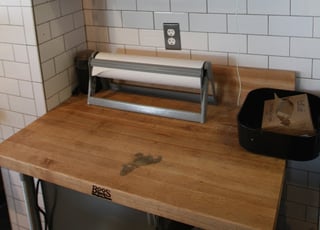Where would the world of food be without paper? It’s essential to all aspects of food service — from delivery, to storage, to presentation. There are a number of different FDA-approved papers that are specially manufactured to suit very specific purposes in food preparation and service, but it can be easy to confuse different types of stock or to wrongly assume they are interchangeable.
Parchment paper and freezer paper, for example, are often mistaken as being the same, when in fact, they are quite different, and are designed to serve different purposes. Let’s take a look at some of the properties of each, and the uses for which they’re best suited.
It’s all about the coating
 When it comes to the differences between these two types of paper, it’s really all about the coating. Parchment paper is a very dense, thin stock of paper that has no coating on either side. Because it is cellulose-based, parchment paper is a non-stick paper even though no additional coating is applied to this stock.
When it comes to the differences between these two types of paper, it’s really all about the coating. Parchment paper is a very dense, thin stock of paper that has no coating on either side. Because it is cellulose-based, parchment paper is a non-stick paper even though no additional coating is applied to this stock.
That means parchment paper is well-suited to withstand heat, without fear of any coating or chemical exposure to the food that touches it. To that end, parchment paper can be used in a variety of ways for cooking, heating, and serving food, including lining cookie sheets and baking pans, and covering foods before microwaving them to avoid a mess.

Freezer paper is a thicker stock of paper that resembles parchment paper, but when you look more closely, you’ll discover a layer of polyethylene coating on one side. This is coating is precisely what makes freezer paper ideal for freezing food, particularly meats. The coating on freezer paper allows it to lock out air while locking in moisture to keep meat freshly frozen for up to 12 months.
That coating is the trick to keeping frozen foods fresh and free from freezer burn, but it is also the reason you’d never want to use freezer paper in the microwave or for lining sheets or pans that will be heated in the oven. You would not want that poly coating breaking down and melting into your food as it heats. Conversely, you would not want to use parchment paper for freezing food because its lack of a coating would not protect your food well enough, or lock in the moisture needed to keep meats fresh.
The bottom line is: think parchment paper for heat, and freezer paper for cold temps and maintaining freshness.
If you’d like to know more about the different types of paper available to address all of your foodservice needs, Oren International can help. We manufacture all types of FDA-approved papers to serve individual and commercial needs. Contact us today to discuss which options are best for you.



